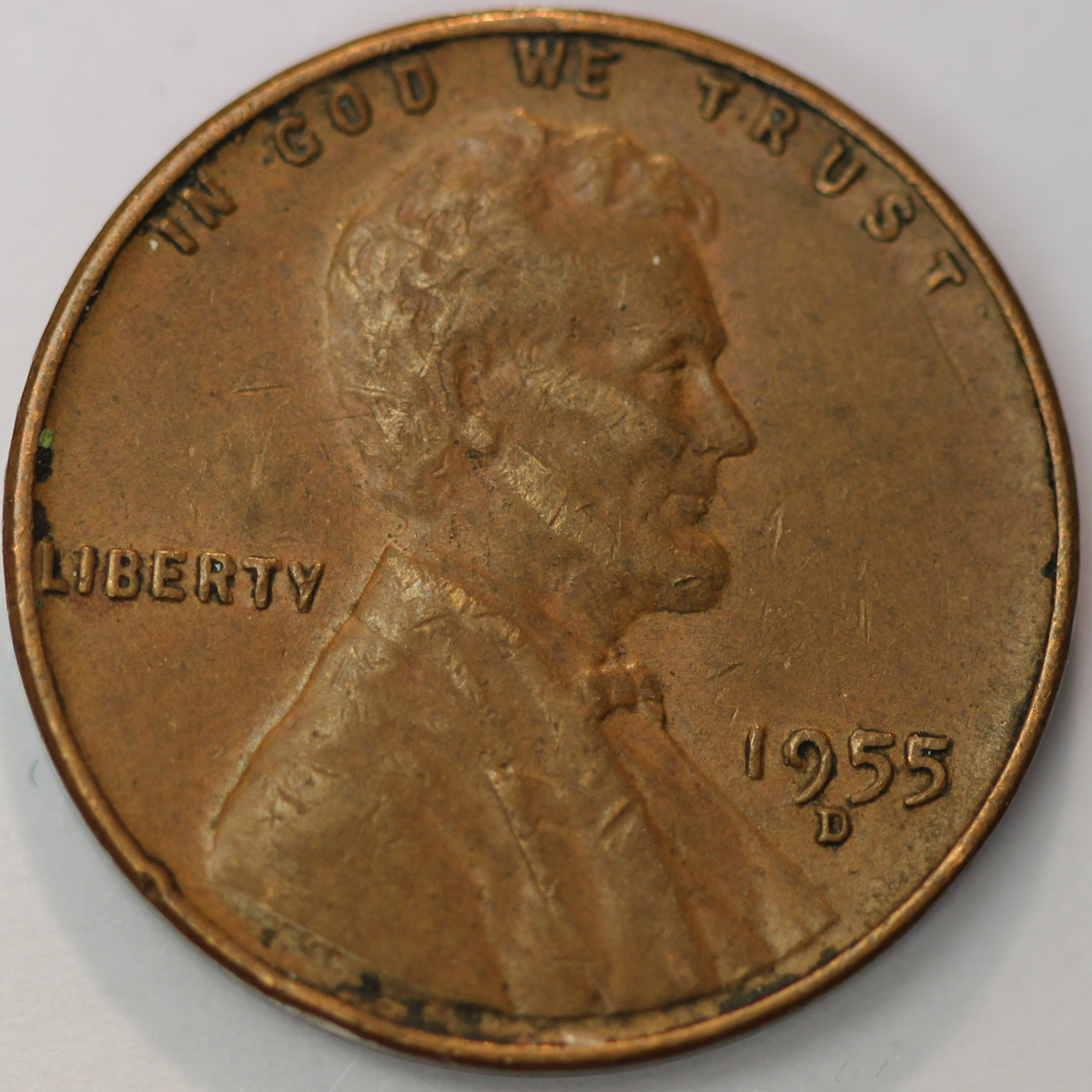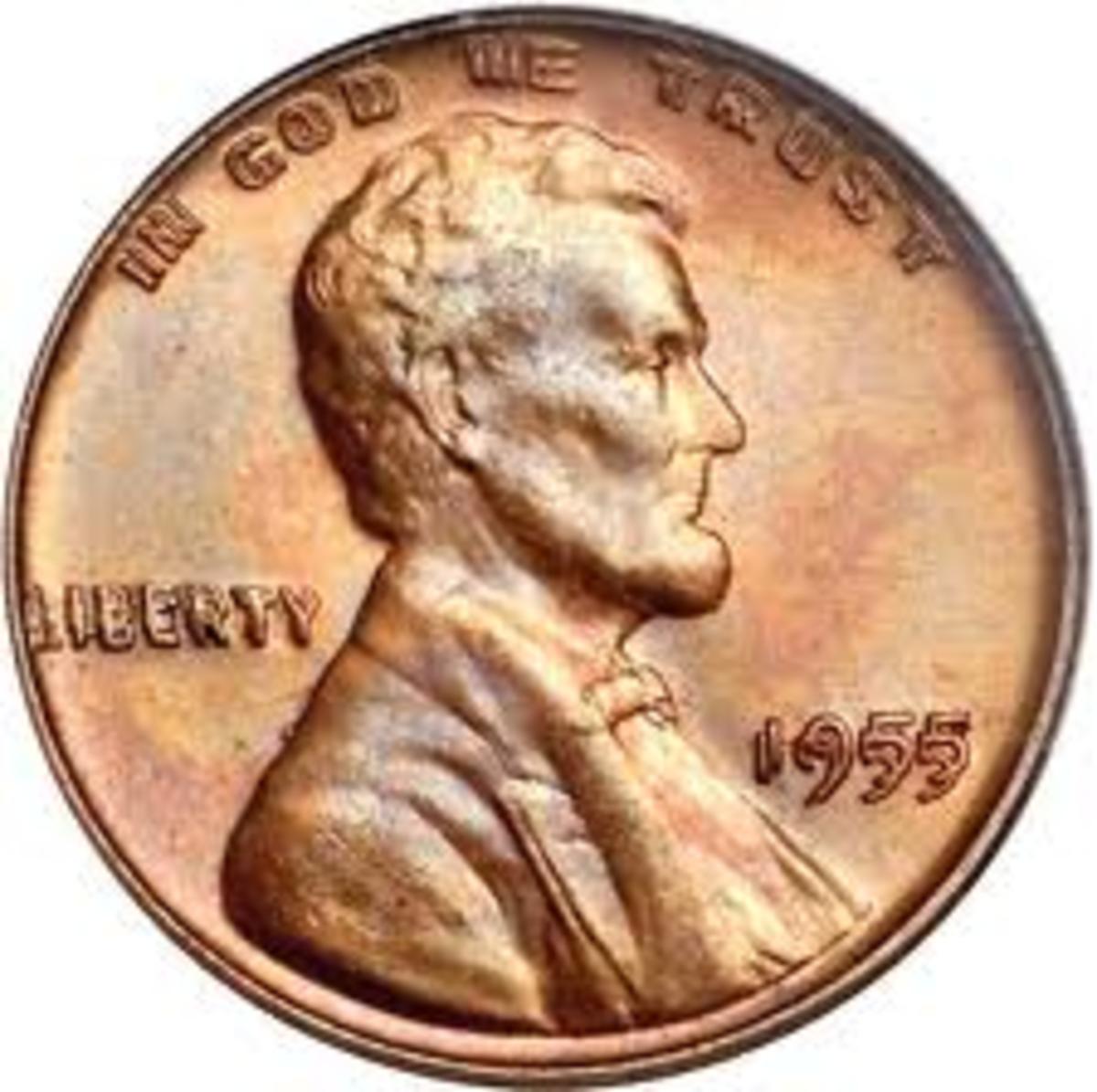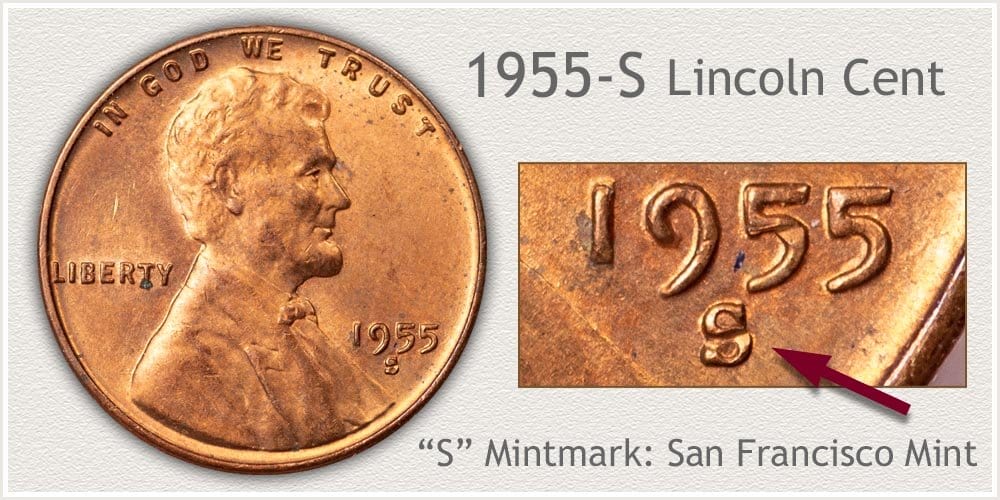Ultimate Guide To The Value Of 1955 D Wheat Penny
What is the value of a 1955 D wheat penny?
The value of a 1955 D wheat penny depends on several factors, including its condition, rarity, and overall desirability. In general, a 1955 D wheat penny in good condition is worth around $0.10. However, a 1955 D wheat penny in mint condition can be worth significantly more, up to $20 or more.
The 1955 D wheat penny was minted at the Denver Mint. It is one of the most common wheat pennies, with over 2 billion minted. However, the 1955 D wheat penny is still a popular coin among collectors, due to its historical significance and its relatively low mintage compared to other wheat pennies.
- Jamie Dimon Wife Judith Kent
- Is Neil Flynn Married
- Nle Choppa Sophie Rain Song
- Tony Hicks
- Tony Sirico Children
Here is a table summarizing the value of 1955 D wheat pennies in different grades:
| Grade | Value ||---|---|| Good | $0.10 || Very good | $0.25 || Fine | $0.50 || Very fine | $1.00 || Extremely fine | $2.00 || Uncirculated | $5.00 || Mint state | $20.00 or more |The value of a 1955 D wheat penny can also vary depending on the variety. There are several different varieties of the 1955 D wheat penny, including the "doubled die" variety. Doubled die coins are created when the dies used to strike the coins are slightly misaligned, resulting in a doubling of the design elements. Doubled die coins are rare and valuable, and a 1955 D wheat penny doubled die can be worth up to $100 or more.
Value of 1955 D Wheat Penny
The value of a 1955 D wheat penny is determined by several key aspects:
- Khabib Wife
- P Diddy Reading List
- Is Iu Getting Married
- Zoe Perry Kids
- P Diddy And Will Smith Relationship
- Condition
- Rarity
- Desirability
- Variety
- Mint mark
- Historical significance
The condition of a coin is one of the most important factors in determining its value. A coin in mint state is worth more than a coin that is circulated and shows wear. The rarity of a coin also affects its value. Coins that were minted in small quantities are worth more than coins that were minted in large quantities. Desirability is another factor that can affect the value of a coin. Coins that are popular among collectors are worth more than coins that are not as popular.
The variety of a coin can also affect its value. There are several different varieties of the 1955 D wheat penny, including the "doubled die" variety. Doubled die coins are created when the dies used to strike the coins are slightly misaligned, resulting in a doubling of the design elements. Doubled die coins are rare and valuable, and a 1955 D wheat penny doubled die can be worth up to $100 or more.
The mint mark on a coin can also affect its value. Coins that were minted at certain mints are worth more than coins that were minted at other mints. For example, 1955 D wheat pennies are worth more than 1955 S wheat pennies, because there were fewer 1955 D wheat pennies minted.
The historical significance of a coin can also affect its value. Coins that were minted during important historical events are worth more than coins that were minted during less significant events. For example, 1955 D wheat pennies are worth more than 1956 D wheat pennies, because 1955 was the last year that wheat pennies were minted.
1. Condition
The condition of a coin is one of the most important factors in determining its value. This is because the condition of a coin reflects how well it has been preserved over time. A coin that is in mint condition is worth more than a coin that is circulated and shows wear.
- Uncirculated
An uncirculated coin is a coin that has never been circulated. It is in mint condition and shows no signs of wear. Uncirculated coins are the most valuable type of coins.
- Extremely fine
An extremely fine coin is a coin that has been circulated, but it shows only slight signs of wear. The design elements are still sharp and clear. Extremely fine coins are very valuable.
- Fine
A fine coin is a coin that has been circulated and shows moderate signs of wear. The design elements are still visible, but they may be slightly worn. Fine coins are worth less than extremely fine coins, but they are still valuable.
- Good
A good coin is a coin that has been circulated and shows significant signs of wear. The design elements may be worn down or even missing. Good coins are worth less than fine coins, but they may still be valuable if they are rare or have other desirable qualities.
The condition of a 1955 D wheat penny can have a significant impact on its value. A 1955 D wheat penny in mint condition is worth around $20 or more, while a 1955 D wheat penny in good condition is worth around $0.10. Therefore, it is important to carefully examine the condition of a 1955 D wheat penny before determining its value.
2. Rarity
Rarity is one of the most important factors in determining the value of a coin. This is because rare coins are more difficult to find, and therefore more desirable to collectors. The rarity of a coin is determined by several factors, including:
- Mintage: The number of coins that were minted.
- Survival rate: The number of coins that have survived to the present day.
- Demand: The number of collectors who want to own the coin.
The 1955 D wheat penny is a relatively common coin, with over 2 billion minted. However, it is still a popular coin among collectors, due to its historical significance and its relatively low mintage compared to other wheat pennies. As a result, the 1955 D wheat penny is worth more than many other wheat pennies.
The rarity of a 1955 D wheat penny can also affect its value. For example, a 1955 D wheat penny in mint condition is worth more than a 1955 D wheat penny in circulated condition. This is because mint state coins are more rare than circulated coins.
In addition, the variety of a 1955 D wheat penny can also affect its rarity. For example, the 1955 D wheat penny doubled die is a rare variety that is worth more than a regular 1955 D wheat penny.
Understanding the connection between rarity and value is important for coin collectors. By understanding the factors that affect the rarity of a coin, collectors can make informed decisions about which coins to buy and sell.
3. Desirability
Desirability is a key factor in determining the value of a coin. This is because desirability affects how many people want to own a particular coin, and therefore how much they are willing to pay for it. There are several factors that can affect the desirability of a coin, including:
- Rarity: Rare coins are more desirable than common coins.
- Condition: Coins in mint condition are more desirable than coins that are circulated and show wear.
- Historical significance: Coins that were minted during important historical events are more desirable than coins that were minted during less significant events.
- Variety: Some varieties of coins are more desirable than others. For example, doubled die coins are more desirable than regular coins.
- Eye appeal: Some coins have a more pleasing appearance than others. Coins with good eye appeal are more desirable than coins with poor eye appeal.
The 1955 D wheat penny is a desirable coin for several reasons. First, it is a relatively rare coin, with only about 2 billion minted. Second, it is a coin that is in high demand among collectors. Third, it is a coin that has historical significance, as it was the last year that wheat pennies were minted. Finally, it is a coin that has good eye appeal, with a sharp design and a pleasing appearance.
As a result of its desirability, the 1955 D wheat penny is worth more than many other wheat pennies. A 1955 D wheat penny in mint condition is worth around $20 or more, while a 1955 D wheat penny in good condition is worth around $0.10. Therefore, it is important to consider the desirability of a coin when determining its value.
4. Variety
The variety of a coin is one of the most important factors in determining its value. This is because different varieties of the same coin can have different levels of rarity, desirability, and historical significance. As a result, some varieties of coins are worth more than others.
The 1955 D wheat penny is a good example of how variety can affect value. The 1955 D wheat penny was minted in two different varieties: the regular variety and the doubled die variety. The doubled die variety is a rare variety that is worth more than the regular variety. This is because the doubled die variety is more difficult to find and is more desirable to collectors.
Another example of how variety can affect value is the 1916 D Mercury dime. The 1916 D Mercury dime was minted in two different varieties: the regular variety and the Winged Liberty Head variety. The Winged Liberty Head variety is a rare variety that is worth more than the regular variety. This is because the Winged Liberty Head variety is more difficult to find and is more desirable to collectors.
Understanding the connection between variety and value is important for coin collectors. By understanding the different varieties of a coin and their relative rarity and desirability, collectors can make informed decisions about which coins to buy and sell.
5. Mint Mark
A mint mark is a small letter or symbol that is stamped on a coin to indicate the mint where it was struck. Mint marks are important for coin collectors because they can help to identify the rarity and value of a coin.
The 1955 D wheat penny was minted at the Denver Mint. The "D" mint mark is located on the reverse of the coin, below the wheat stalks. 1955 D wheat pennies are more valuable than 1955 wheat pennies that were minted at other mints. This is because the Denver Mint produced fewer 1955 wheat pennies than the other mints.
The mint mark can also affect the value of other coins. For example, the 1916 D Mercury dime is worth more than the 1916 Mercury dime that was minted at the Philadelphia Mint. This is because the 1916 D Mercury dime is a rare variety.
Understanding the connection between mint marks and value is important for coin collectors. By understanding the mint marks on coins, collectors can make informed decisions about which coins to buy and sell.
6. Historical significance
The historical significance of a coin can have a significant impact on its value. This is because coins that were minted during important historical events are more desirable to collectors, and therefore worth more money. The 1955 D wheat penny is a good example of how historical significance can affect value.
The 1955 D wheat penny was minted during a time of great change in the United States. The country was in the midst of the Cold War, and the threat of nuclear war was looming. In addition, the civil rights movement was gaining momentum, and the country was on the verge of major social and political changes.
The 1955 D wheat penny was the last year that wheat pennies were minted. This makes it a significant coin in the history of American coinage. Wheat pennies were first minted in 1909, and they were one of the most popular coins in circulation for over 50 years. The decision to stop minting wheat pennies was a major change, and it marked the end of an era in American history.
The historical significance of the 1955 D wheat penny makes it a desirable coin for collectors. This is reflected in the coin's value. A 1955 D wheat penny in mint condition is worth around $20 or more. This is significantly more than the value of other wheat pennies from the same year.
Understanding the connection between historical significance and value is important for coin collectors. By understanding the historical context of a coin, collectors can make informed decisions about which coins to buy and sell.
FAQs about the value of 1955 D wheat pennies
Here are some frequently asked questions about the value of 1955 D wheat pennies:
Question 1: How much is a 1955 D wheat penny worth?
Answer: The value of a 1955 D wheat penny depends on its condition, rarity, desirability, and variety. A 1955 D wheat penny in mint condition is worth around $20 or more, while a 1955 D wheat penny in good condition is worth around $0.10.
Question 2: What is the most valuable 1955 D wheat penny?
Answer: The most valuable 1955 D wheat penny is the doubled die variety. The doubled die variety is a rare variety that is worth more than the regular variety. A 1955 D wheat penny doubled die in mint condition can be worth up to $100 or more.
Question 3: How can I tell if my 1955 D wheat penny is valuable?
Answer: There are several factors to consider when determining the value of a 1955 D wheat penny. These factors include condition, rarity, desirability, and variety. If your 1955 D wheat penny is in mint condition, is a rare variety, is desirable to collectors, and has good eye appeal, then it is likely to be valuable.
Question 4: Where can I sell my 1955 D wheat penny?
Answer: There are several places where you can sell your 1955 D wheat penny. You can sell your coin to a local coin dealer, sell it online through a coin auction website, or sell it to a private collector. The best way to get the most money for your coin is to sell it to a reputable coin dealer.
Question 5: What is the future value of 1955 D wheat pennies?
Answer: The future value of 1955 D wheat pennies is difficult to predict. However, the value of wheat pennies in general has been increasing in recent years. This is due to several factors, including the increasing popularity of coin collecting and the decreasing supply of wheat pennies. As a result, it is likely that the value of 1955 D wheat pennies will continue to increase in the future.
Summary: The value of a 1955 D wheat penny depends on several factors, including condition, rarity, desirability, and variety. 1955 D wheat pennies are worth more than other wheat pennies because they are relatively rare and are desirable to collectors. The most valuable 1955 D wheat penny is the doubled die variety. If you have a 1955 D wheat penny, it is important to have it evaluated by a professional coin dealer to determine its value.
Transition to the next article section: Now that you know more about the value of 1955 D wheat pennies, you can start to make informed decisions about whether or not to buy or sell these coins.
Conclusion
The value of a 1955 D wheat penny depends on several factors, including condition, rarity, desirability, and variety. 1955 D wheat pennies are worth more than other wheat pennies because they are relatively rare and are desirable to collectors. The most valuable 1955 D wheat penny is the doubled die variety.
If you have a 1955 D wheat penny, it is important to have it evaluated by a professional coin dealer to determine its value. 1955 D wheat pennies can be a valuable addition to any coin collection.
- Hunter Fieri
- Joe Locke Partner
- Chris Mcnally Relationships
- Alec Bohm Family
- Lou Diamond Phillips Brother Emilio Estevez

1955 D Lincoln Wheat Cent Penny Extra Fine, XF eBay

1955 Penny Value

1955 Wheat Penny Value Guides (Rare Errors, “D”, “S” and No Mint Mark)